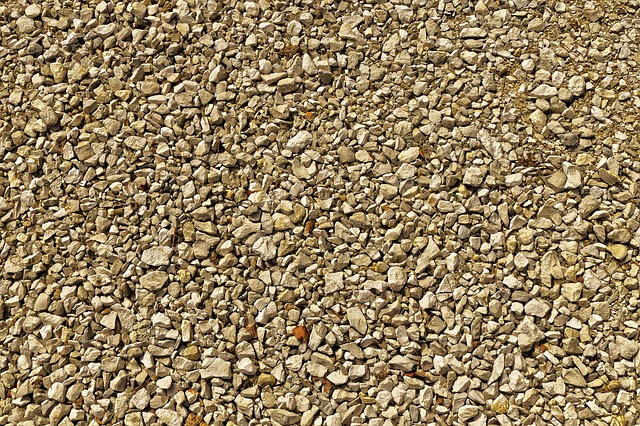Gravel in construction
Gravel is a loose aggregation of small, variously sized fragments of rock. It has a wide range of applications in the construction industry.
The weathering and erosion of rocks is the natural process by which gravel deposits are formed. Gravel can also be produced in quarries known as gravel pits, where rocks such as sandstone, limestone and basalt are crushed down to size. Gravel particle sizes range from 2 mm to over 60 mm, and are available in a range of colours, textures and stone types.
Gravel, along with sand, is used for the manufacture of concrete, as well as for mixing with asphalt as part of road construction. It can be used as the base layer for roads before being covered with tarmac, and is also commonly used to surface roadways, especially those in rural areas and in icy conditions. It can also be used to as part of roof coverings.
Gravel can be used along with pebbles as a form of render known as pebbledash which is used for the external walls of a building in which the top coat is textured to create a rough finish. For more information, see Pebbledash.
Gravel can be used in the filtration of water, where it acts as a natural filter holding back precipitates which may contain impurities as well as other sand-sized particles. The angularity and hardness of gravel makes it resistant to water erosion.
Gravel is commonly used for landscaping applications, such as on driveways, walkways, or as a decorative filler over soil instead of grass.
[edit] Related articles on Designing Buildings Wiki
Featured articles and news
Latest Build UK Building Safety Regime explainer published
Key elements in one short, now updated document.
UKGBC launch the UK Climate Resilience Roadmap
First guidance of its kind on direct climate impacts for the built environment and how it can adapt.
CLC Health, Safety and Wellbeing Strategy 2025
Launched by the Minister for Industry to look at fatalities on site, improving mental health and other issues.
One of the most impressive Victorian architects. Book review.
Common Assessment Standard now with building safety
New CAS update now includes mandatory building safety questions.
RTPI leader to become new CIOB Chief Executive Officer
Dr Victoria Hills MRTPI, FICE to take over after Caroline Gumble’s departure.
Social and affordable housing, a long term plan for delivery
The “Delivering a Decade of Renewal for Social and Affordable Housing” strategy sets out future path.
A change to adoptive architecture
Effects of global weather warming on architectural detailing, material choice and human interaction.
The proposed publicly owned and backed subsidiary of Homes England, to facilitate new homes.
How big is the problem and what can we do to mitigate the effects?
Overheating guidance and tools for building designers
A number of cool guides to help with the heat.
The UK's Modern Industrial Strategy: A 10 year plan
Previous consultation criticism, current key elements and general support with some persisting reservations.
Building Safety Regulator reforms
New roles, new staff and a new fast track service pave the way for a single construction regulator.
Architectural Technologist CPDs and Communications
CIAT CPD… and how you can do it!
Cooling centres and cool spaces
Managing extreme heat in cities by directing the public to places for heat stress relief and water sources.
Winter gardens: A brief history and warm variations
Extending the season with glass in different forms and terms.
Restoring Great Yarmouth's Winter Gardens
Transforming one of the least sustainable constructions imaginable.























